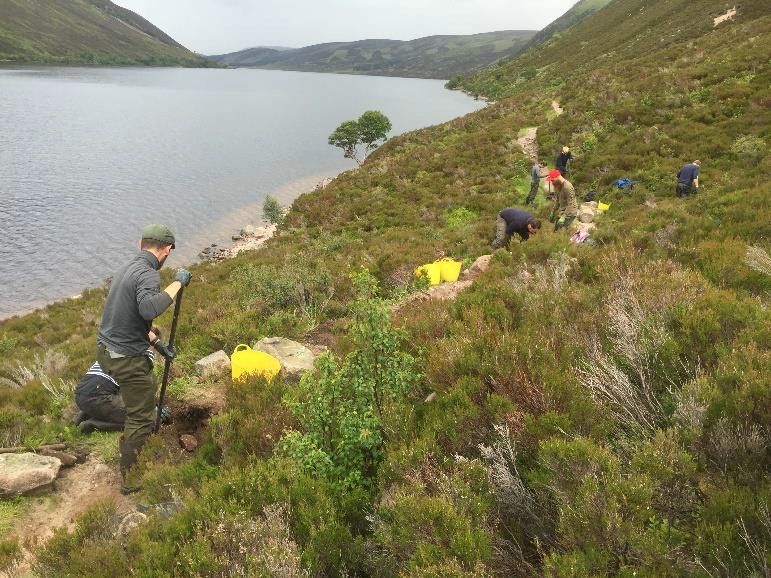
Donald Thomas
Our December lecture was given by Dougie Baird, CEO of the Outdoor Access Trust for Scotland (OATS). Originally the Upper Deeside Access Trust (UDAT), then Cairngorms Outdoor Access Trust (COAT), and now OATS, it is a charity promoting sustainable public access. They build and repair paths, mountain habitats and trailhead facilities to meet the needs of the public, landowners and communities, while conserving and protecting the natural heritage. Most notably on Deeside, they enlarged the parking in Glen Muick and now see a significant income stream from parking charges. High demand last year out-stripped capacity and once again, cars were parked along the road. Vehicle access to the glen was restricted at times.
The organisationís changes of name reflect changes in their sphere of influence. Initial success with low- and high-level paths in and around the Deeside towns was followed by tapping into European funding which was used to improve paths in the Eastern Cairngorms. To access additional funds, they extended their area to both National Parks. Then, spurred on by progress in the Parks and not frightened by a challenge, they took on the access/parking issues in Glen Brittle on Skye. A larger car park was completed in 2020 and now has capacity for 140 vehicles for visitors to the Fairy Pools. Public toilets, designed to cope with 200,000 visitors per year, required an off-grid sewage system with a 450-metre soakaway. Income from parking charges should cover running costs with some surplus for local projects. Only time will tell if their plans are successful when tourist numbers increase again.
 |
| Trainees at Loch Muick |
Their Mountains and The People Project (TMTP) has run for 5 years but, like any project funding, it was known from the start that this was time limited. 42 path contractors have been trained, many of whom are now working in the industry in various capacities.
Volunteers have contributed almost 1400 working days of path surveying, maintenance and light construction. Although briefly extended following the Covid lockdown, TMTP has now finished but it is hoped that the enthusiasm generated will continue. It is not yet clear how this might be achieved. In numbers, TMTP spent £5.6 million to build and repair more than 140 km of footpaths on 44 sites between the two National Parks.
Work has been carried out in 2020 on the Glas Allt path and bridge, repairing damage from Storm Frank and on the Lochnagar main path. Elsewhere in the country major work has included the Speyside Way extension, a new path on Criffell in Dumfries and Galloway and continuing work on Ben More. Further details can be read in their Annual Report.
Dougie highlighted the chronic lack of investment in access infrastructure. This has been clearly identified with parking and fouling issues across Scotland following relaxation of the national lockdown. Popular trails have seen significant erosion and some areas have seen increased use by mountain bikers. There is considerable scope for public education to ensure that Scotlandís countryside is available for visitors to enjoy in the future. Work will focus on promoting the Scottish Outdoor Access Code, particularly to new recreational users.
In his talk, Dougie showed the funding challenge faced by the trust. While their work has increased, there has been a reduction in the proportion that can be obtained from public sources. Car parking charges at various locations provide a valuable contribution but are not sufficient on their own. Future development will require collaboration with a variety of partners.
OATS has achieved much but there is still much to do.
Please let the webmaster know if there are problems with viewing these pages or with the links they contain.